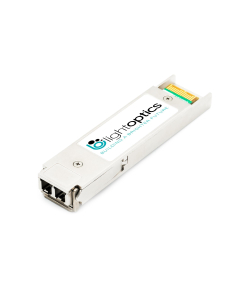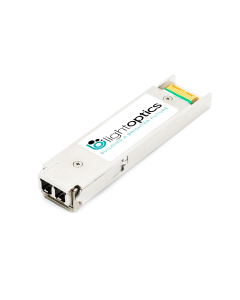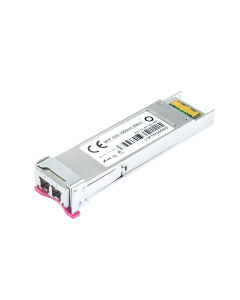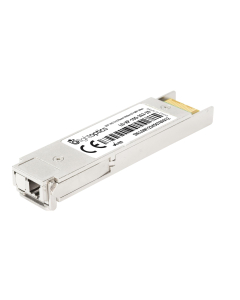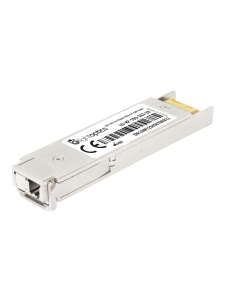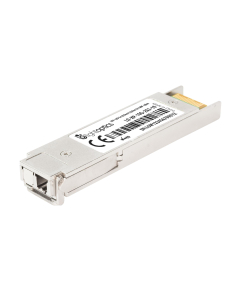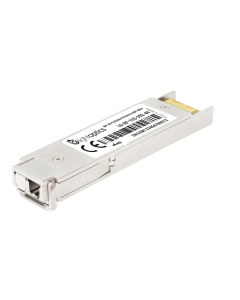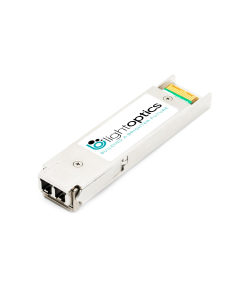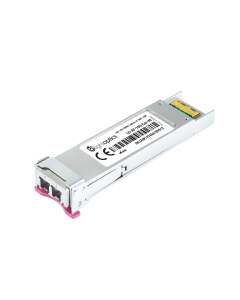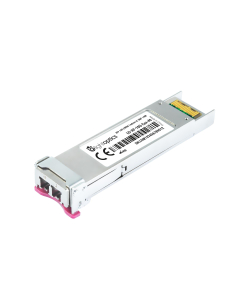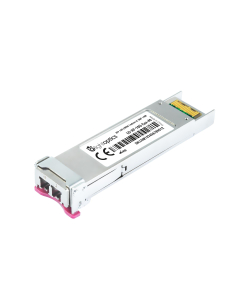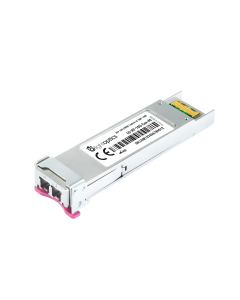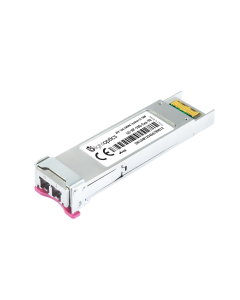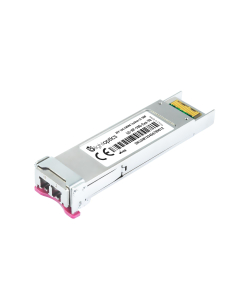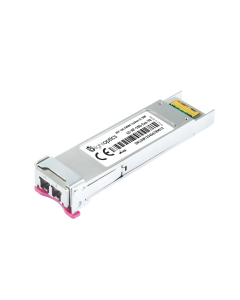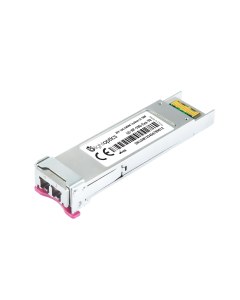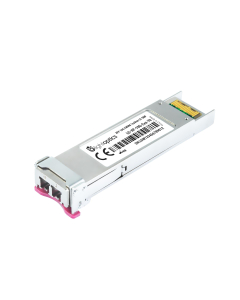- Limited availabilityXFP SR 10Gbs 850nm LC DDM MMF 300m (VSCEL+PIN) Model: LO-XP-10G-SR€51.94 €63.89
- To orderXFP LR 10Gb 1310nm LC DDM SMF 10km optical module (DFB+PIN) Model: LO-XP-10G-LR€37.24 €45.81
- Limited availabilityXFP ER 10Gb 1550nm LC DDM SMF 40km optical module (EML+PIN) Model: LO-XP-10G-ER€144.06 €177.19
- Limited availabilityXFP BIDI SM Tx1270nm/ Rx1330nm LC 20km 10Gb (DFB+PIN) Model: LO-XP-10G-2S3-20€50.96 €62.68
- Limited availabilityXFP BIDI SM Tx1330nm/ Rx1270nm LC 20km 10Gb (DFB+PIN) Model: LO-XP-10G-3S2-20€50.96 €62.68
- Limited availabilityXFP BIDI SM 1270nm/1330nm LC 10km 10Gb (DFB+PIN) Model: LO-XP-10G-2S3-10€50.96 €62.68
- Limited availabilityXFP BIDI SM 1330nm/1270nm LC 10km 10Gb (DFB+PIN) Model: LO-XP-10G-3S2-10€50.96 €62.68
- To orderXFP BIDI SM Tx1270nm/ Rx1330nm LC 40km 10Gb (DFB+PIN) Model: LO-XP-10G-2S3-40€55.86 €68.71
- To orderXFP BIDI SM Tx1330nm/ Rx1270nm LC 40km 10Gb (DFB+PIN) Model: LO-XP-10G-3S2-40€55.86 €68.71
- To orderXFP CWDM optical module 10G 1470nm LC DDM SMF 14dB EML Laser Model: LO-XP-10G-C47-40€214.62 €263.98
- To orderModuł optyczny XFP CWDM 10G 1490nm LC DDM SMF 14dB EML Laser Model: LO-XP-10G-C49-40€214.62 €263.98
- To orderXFP CWDM optical module 10G 1510nm LC DDM SMF 14dB EML Laser Model: LO-XP-10G-C51-40€214.62 €263.98
- To orderXFP CWDM optical module 10G 1530nm LC DDM SMF 14dB EML Laser Model: LO-XP-10G-C53-40€214.62 €263.98
- To orderXFP CWDM optical module 10G 1550nm LC DDM SMF 14dB EML Laser Model: LO-XP-10G-C55-40€214.62 €263.98
- To orderXFP CWDM optical module 10G 1570nm LC DDM SMF 14dB EML Laser Model: LO-XP-10G-C57-40€214.62 €263.98
- To orderXFP CWDM optical module 10G 1590nm LC DDM SMF 14dB EML Laser Model: LO-XP-10G-C59-40€214.62 €263.98
- To orderXFP CWDM optical module 10G 1610nm LC DDM SMF 14dB EML Laser Model: LO-XP-10G-C61-40€214.62 €263.98
- To orderXFP CWDM 10G 70km 1470nm LC DDM SMF EML Laser (EML+APD) Model: LO-XP-10G-C47-70€337.12 €414.66
- To orderXFP CWDM 10G 70km 1490nm LC DDM SMF EML Laser (EML+APD) Model: LO-XP-10G-C49-70€337.12 €414.66
- To orderXFP CWDM 10G 70km 1510nm LC DDM SMF EML Laser (EML+APD) Model: LO-XP-10G-C51-70€337.12 €414.66
- To orderXFP CWDM 10G 70km 1530nm LC DDM SMF EML Laser (EML+APD) Model: LO-XP-10G-C53-70€337.12 €414.66
- To orderXFP CWDM 10G 70km 1550nm LC DDM SMF EML Laser (EML+APD) Model: LO-XP-10G-C55-70€337.12 €414.66
- To orderXFP CWDM 10G 70km 1570nm LC DDM SMF EML Laser (EML+APD) Model: LO-XP-10G-C57-70€337.12 €414.66
XFP Transceivers- specification
XFP modules are highly advanced and independent of transmission protocols. They are equipped with an LC optical connector, that allows high port density. They operate on following wavelengths: 850nm, 1310 nm or 1550 nm. Their maximum bandwidth range is 11.35Gbps. The most common applications for this type of module are: 10Gigabit Ethernet, 10Gb/s Fiber Channel, 10Gb/s Optical Transport Network (OTN) OTU-2, SONET (OC-192), SDH @ STM-64. They operate over a single optical fiber and support WDM technology. Additionally, they maintain digital diagnostics in the SFF-8472 standard.
About XFP Transceivers
XFP transceivers are often said to be next step from XENPAK and X2. They are perfect for applications that require high port density (e.g., in switches or routers of high capacity) due to their small size and low power consumption.
The transceivers’ max distance is 80km, without additional amplification, but this value can change depending on the internal components of the model. Some modules possess electronic monochromatic dispersion compensation. In that case, the XFP transceiver can obtain the range of even 130km. The modules are compliant with HP, Cisco, Avaya, D-Link, Huawei, 3Com, Alcatel-Lucent, Netgear, Brocade, Extreme Networks and many other vendors.
Optical transceivers convert optical signal to electrical. On the market there are several standards of such modules. Each of them differs in terms of electrical interface and case size, as well as data rate, which can
The XFP transceiver works with single or multimode optical fiber, bandwidth from 9,95Gbps to 11,1Gbps, LC connector. For duplex, simplex, CWDM / DWDM transmission. High compatibility, proven quality.









